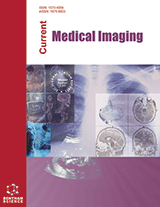
Abstract
Background: The classification of Congenital Uterine Malformations (CONUTA) relies on coronal imaging of the uterus using 3D TVUS and MRI. In everyday practice, radiologists and gynaecologists often struggle to confidently categorize CONUTA due to varying classification systems and the lack of worldwide consensus.
Objectives: The aim of this study was to evaluate the diagnostic concordance and discrepancies between two imaging techniques within the context of the ASRM, ESHRE/ESGE, and CUME systems.
Methods: Ninety-four patients suspected of having CONUTA underwent evaluation: 67 underwent 3D TVUS, 53 had MRI scans, and 34 were examined using both imaging techniques.
An initial cross-listing table of ASRM, ESHRE/ESGE, and CUME was created, and a flowchart schema was used to define the type of congenital uterine anomaly for each system.
The prevalence of anomalies in each system was calculated, and Fleiss’ Kappa was used to assess and determine the level of agreement.
Results: Class VI arcuate uterus was the most common form in ASRM 2016 and 2021, while the partially septate uterus predominated in the CUME 2018 and ESHRE/ESGE 2016 classification systems.
Conclusion: There is no discordance between classification systems for all fusion defects and complete septate type of absorption defects. In the ESHRE/ESGE system, nearly half of the abnormal uteruses were categorized as partially septate. However, the CUME system proved less effective in distinguishing between normal and arcuate uteruses.
Keywords: Congenital, MRI, Three-dimensional ultrasonography, Uterine anomalies, Uterus, CUME system.
 22
22












